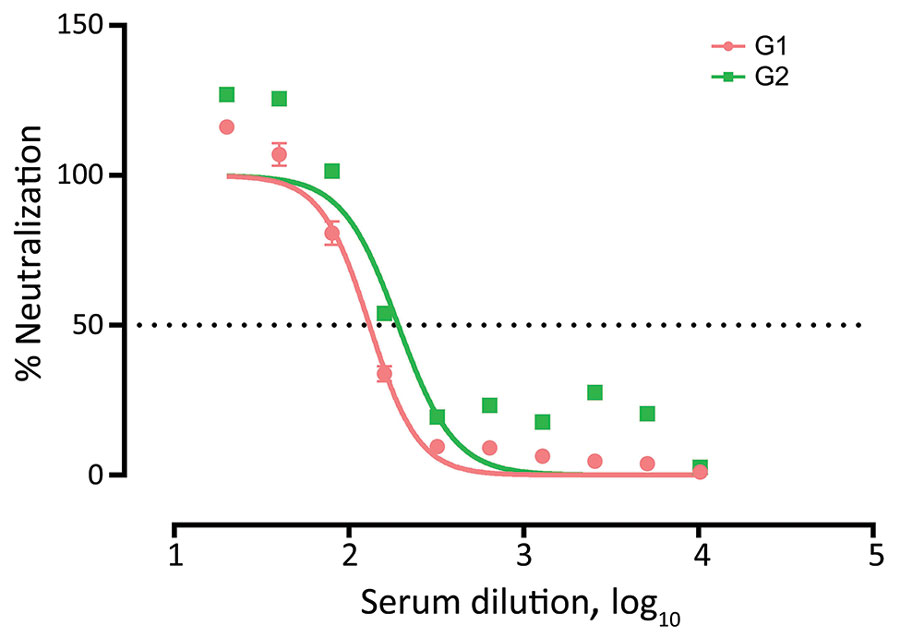Volume 30, Number 6—June 2024
Dispatch
SARS-CoV-2 in Captive Nonhuman Primates, Spain, 2020–2023
Figure 2

Figure 2. Virus neutralization tests conducted for 2 SARS-CoV-2–seropositive gorillas in study of captive nonhuman primates, Spain, 2020–2023. Serum samples from 2 gorillas tested positive for SARS-CoV-2 antibodies by ELISA. Virus neutralization tests were performed; 50% neutralizing antibody titers were 1:131.4 for G1 and 1:191.9 for G2 serum samples. G1, gorilla 1; G2, gorilla 2.
Page created: April 09, 2024
Page updated: May 22, 2024
Page reviewed: May 22, 2024
The conclusions, findings, and opinions expressed by authors contributing to this journal do not necessarily reflect the official position of the U.S. Department of Health and Human Services, the Public Health Service, the Centers for Disease Control and Prevention, or the authors' affiliated institutions. Use of trade names is for identification only and does not imply endorsement by any of the groups named above.